Content can be downloaded for non-commercial purposes, such as for personal use or in educational resources.
For commercial purposes please contact the copyright holder directly.
Read more about the The Creative Archive Licence.
Description
The ninth issue of CeNeS: The Magazine of Cardiff New (later Reform) Synagogue that came out in September 1996. Noteworthy features: 1) Rabbi Elaina Rothman's piece: 'Topical for the Holidays'. She writes about Rosh Hashanah (the Jewish New Year) with the focus of the piece appropriately being the theme of beginning again and leaving things behind. She ends with: 'May you all be recorded in the Book of Life for a good and happy year'. 2) This issue contains an editorial on 'outmarriage' (marrying out of Judaism). According to Jewish Policy Research carried out in 1996 forty-four percent of Jewish men marry out of their faith. The editorial makes the case for addressing the issue of marrying out: its popularity affirms that it is here to stay and cannot be ignored. It puts forward the idea that Jewish conversions of non-Jewish partners could be encouraged while non-Jewish partners who wish to stay non-Jewish could be educated about Jewish culture and beliefs. 3) The magazine features a piece about a trip to Prague. The individuals on the trip visited the State Jewish Museum and Pinkas Synagogue. The State Jewish Museum in Prague has exhibitions on display in four synagogues including the Pinkas Synagogue. The Pinkas Synagogue is the second oldest preserved synagogue in Prague dating back to 1535. Today it has a memorial plague which bares the names of the 77,000 Czech Jews who died in the Holocaust. It is also the permanent home of the largest collection of drawings by children that were made during the Holocaust. 4387 of them are by the Jewish children who were imprisoned in the Terezín Ghetto in the Second World War. All of these drawings were made between 1943 and 1944 under the watchful instruction of Friedl Dicker-Brandeis. Friedl Dicker-Brandeis was a Viennese Jewish artist who fled to Czechoslovakia from Nazi-occupied Austria during the Second World War. When she was incarcerated in the concentration camp Theresienstadt in 1942 she encouraged the imprisoned children to use art to help them to cope with their situation: they could channel their pain into drawings. Two years later Friedl and the majority of her students were murdered in Auschwitz. The drawings have survived and serve as a reminder of their hope and defiance in the face of horrifying adversity. Sources: 'Jewish Museum in Prague' (https://www.jewishmuseum.cz/en/info/visit/). 'Children's Drawings from the Terezín Ghetto' (https://www.jewishmuseum.cz/en/collection-research/collections-funds/visual-arts/children-s-drawings-from-the-terezin-ghetto/). 'Keeping Creativity Alive, Even in Hell' by Julie Salamon (https://www.nytimes.com/2004/09/10/arts/design/keeping-creativity-alive-even-in-hell.html). 4) This issue contains a think-piece about Tikkun Olam: the Jewish concept of repairing the world or making it a better place. The case is made that support must be offered by Jewish communities to the Refugee Council as many members of congregations (especially of the Cardiff Reform Synagogue's congregation) are the grandchildren of immigrants. Many Jewish people can emphasise with the feeling of displacement: their ancestors lived the experience. The Cardiff Reform Synagogue was founded in 1948 as the Cardiff New Synagogue. The following year, it became a constituent member of the Movement for Reform Judaism. Born in reaction against the more restrictive traditions of the Orthodox Judaism of Cardiff Hebrew Congregation, such as the prohibition of driving on the Sabbath and the ban on interfaith marriages, the new Synagogue appealed to the immigrants who had fled the war-torn Europe, where the Reform movement was already well-established. The services were initially held in the Temple of Peace. The congregation now worships in a converted Methodist Chapel on Moira Terrace they acquired in 1952. Depository: Glamorgan Archives.

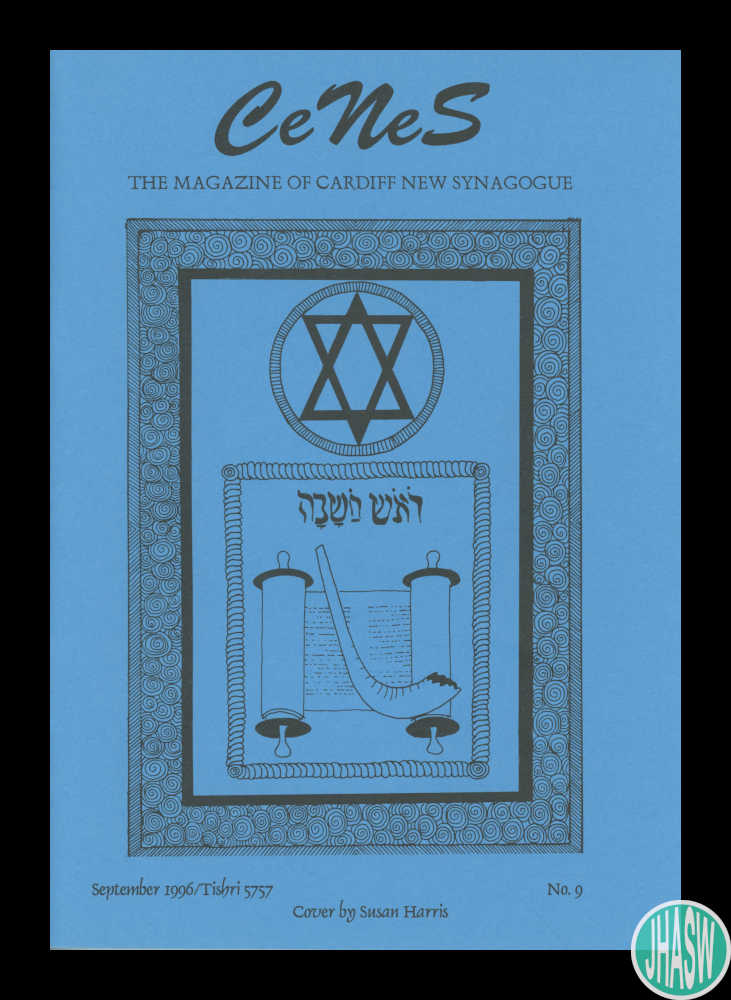



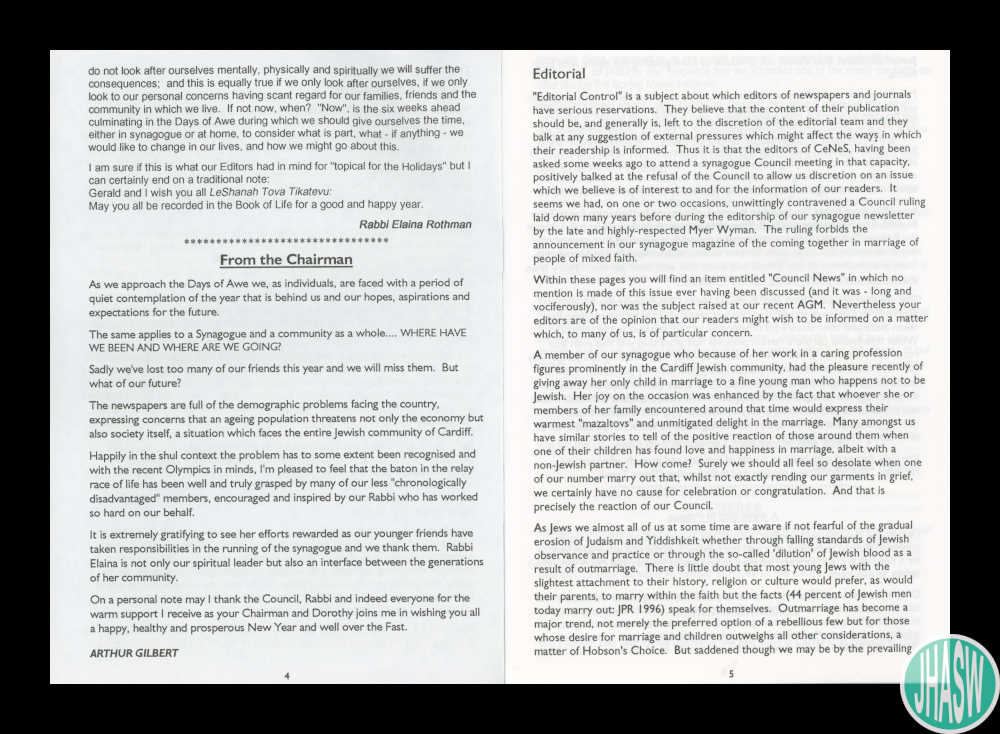



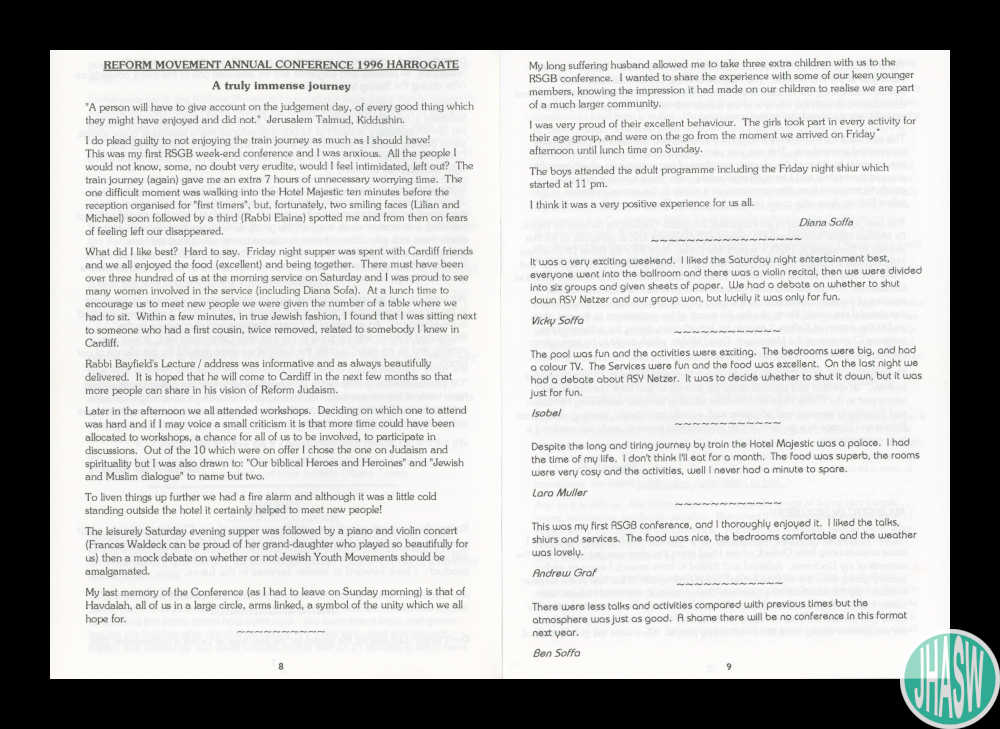



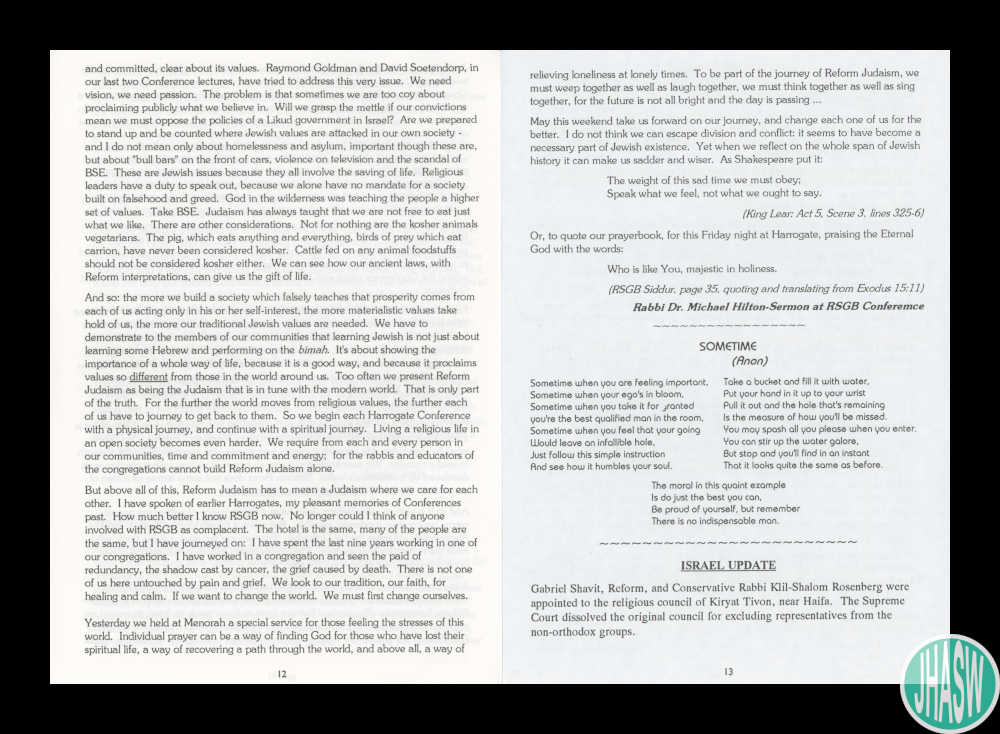

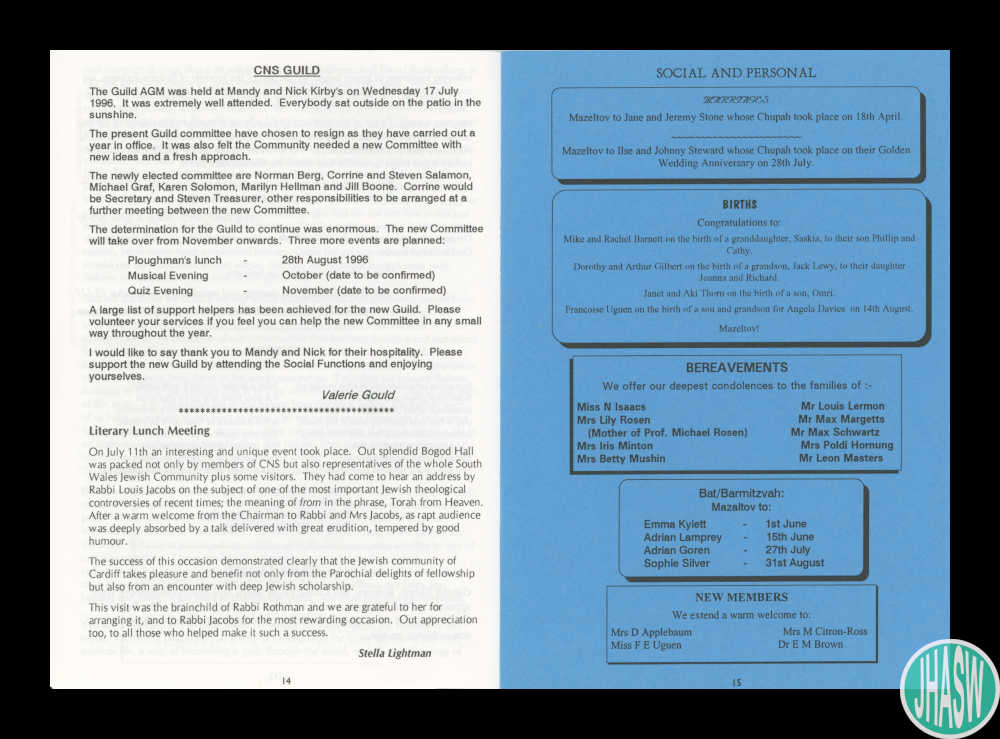

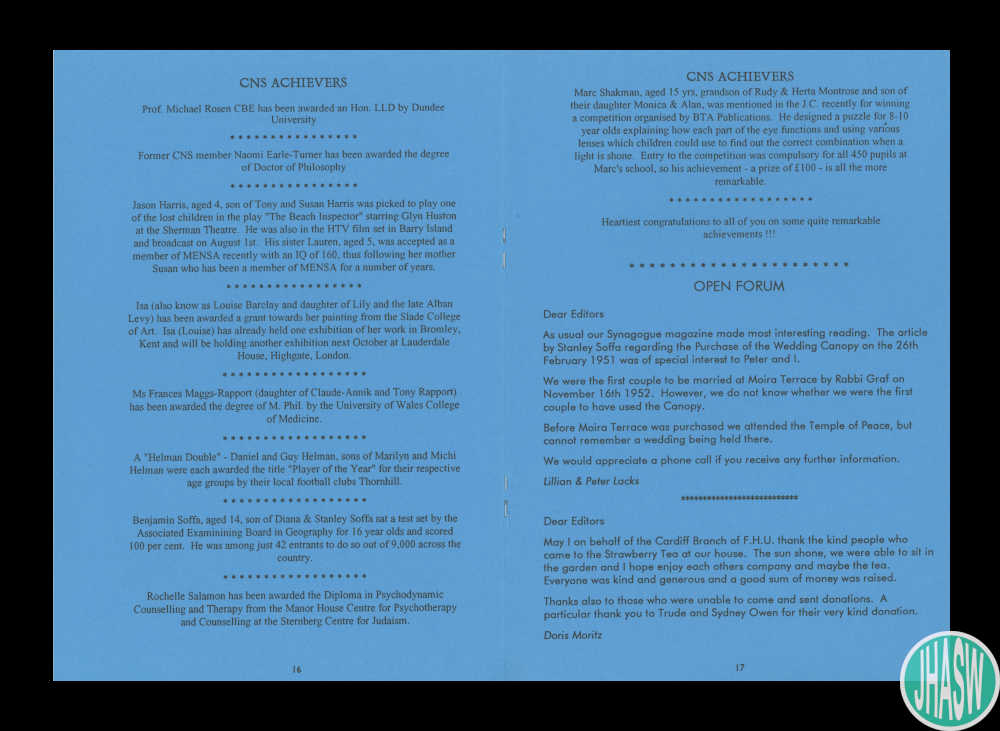



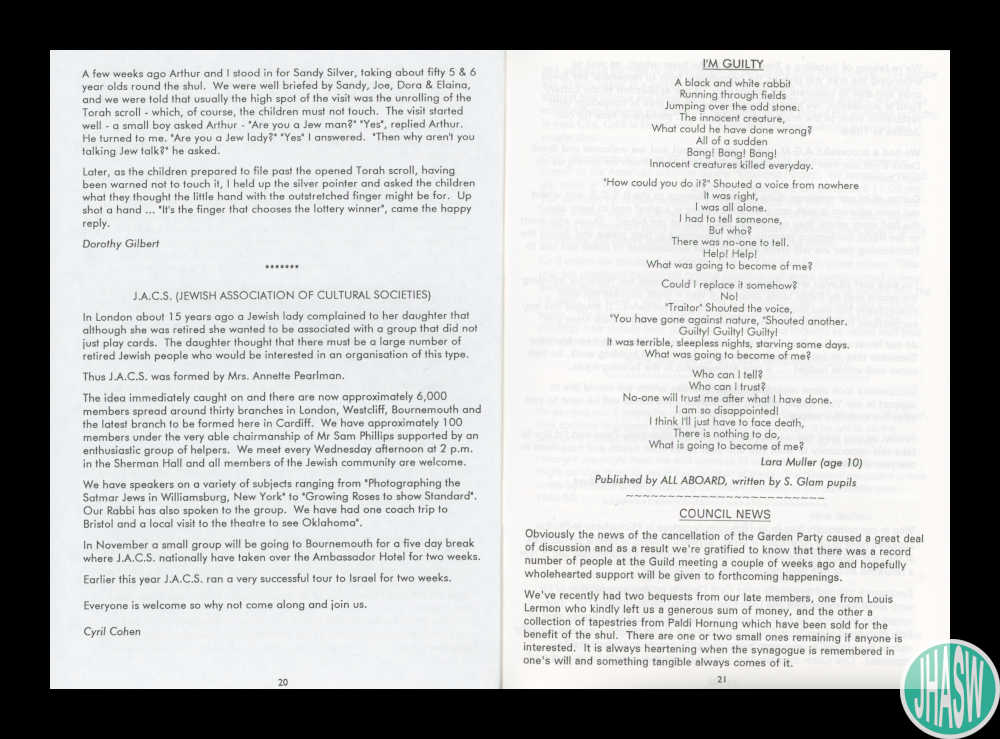

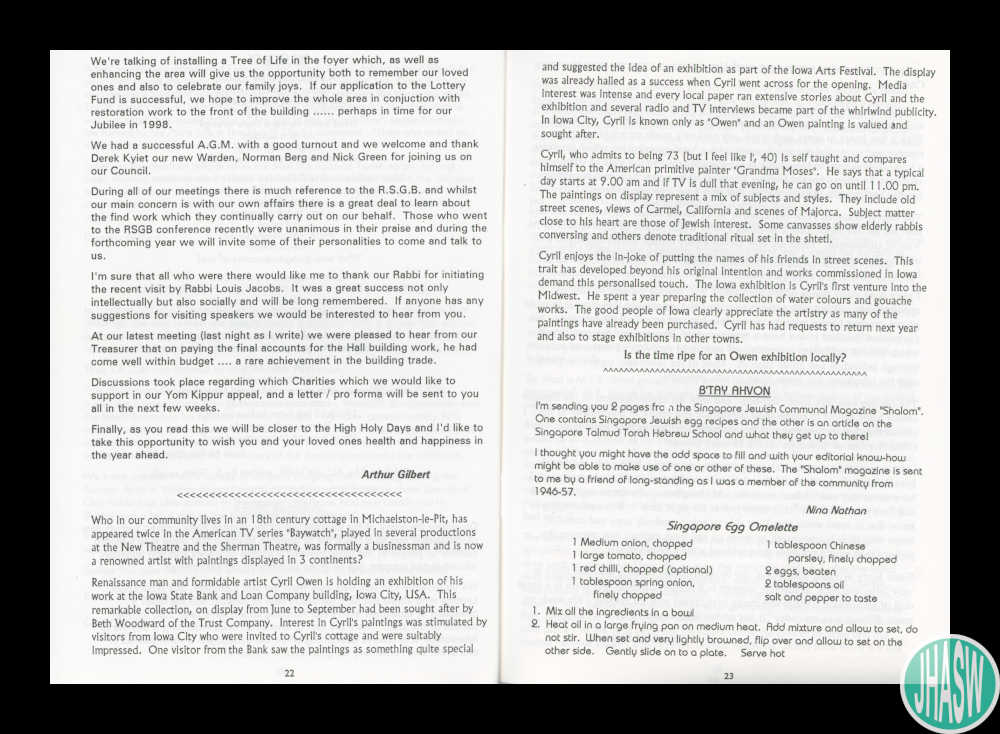







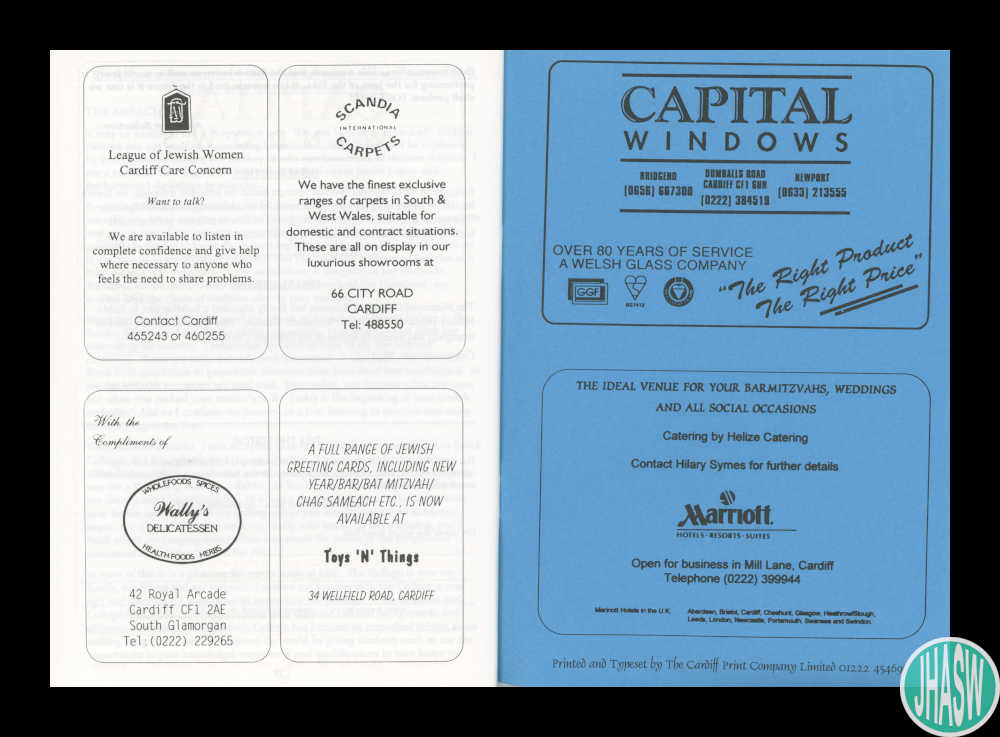






Do you have information to add to this item? Please leave a comment
Comments (0)
You must be logged in to leave a comment